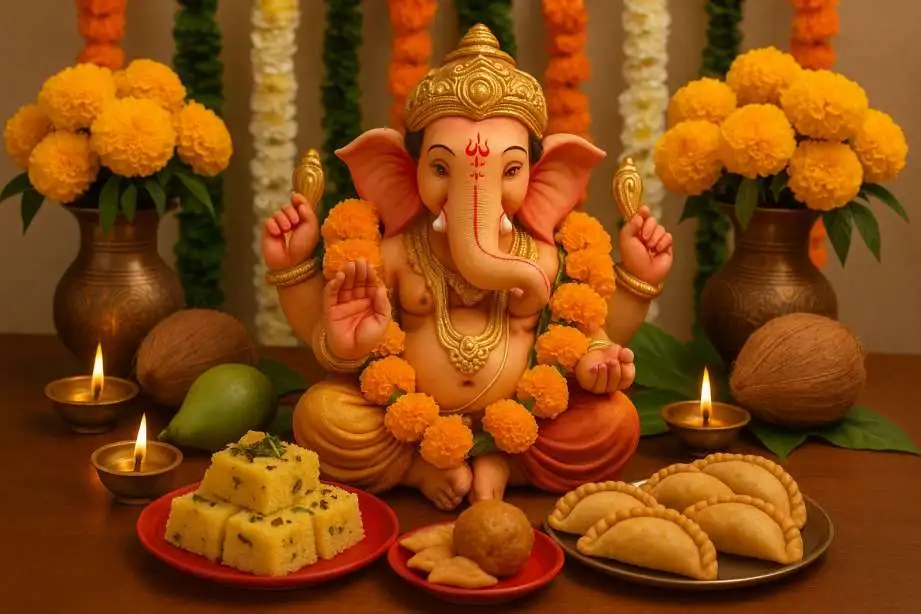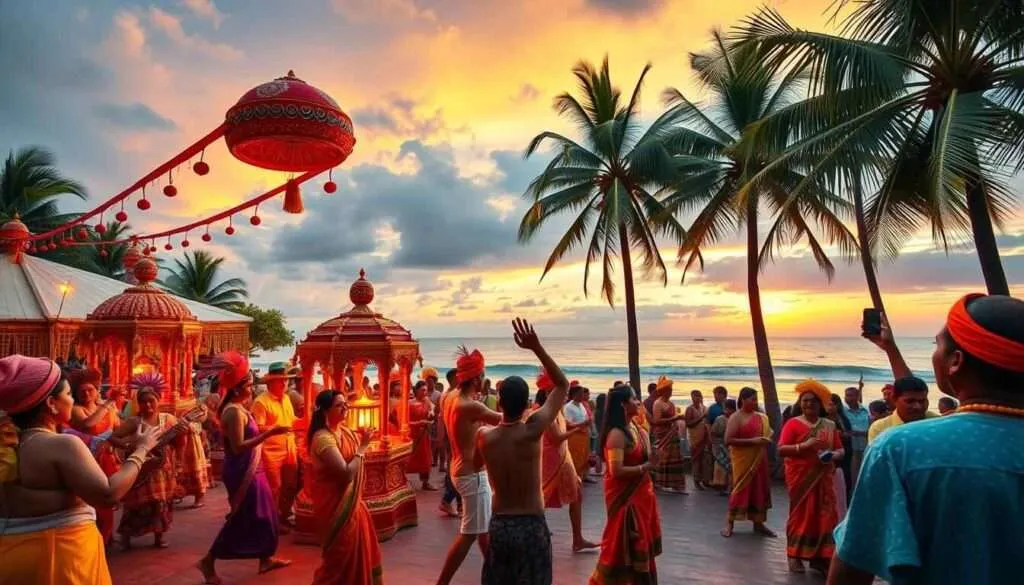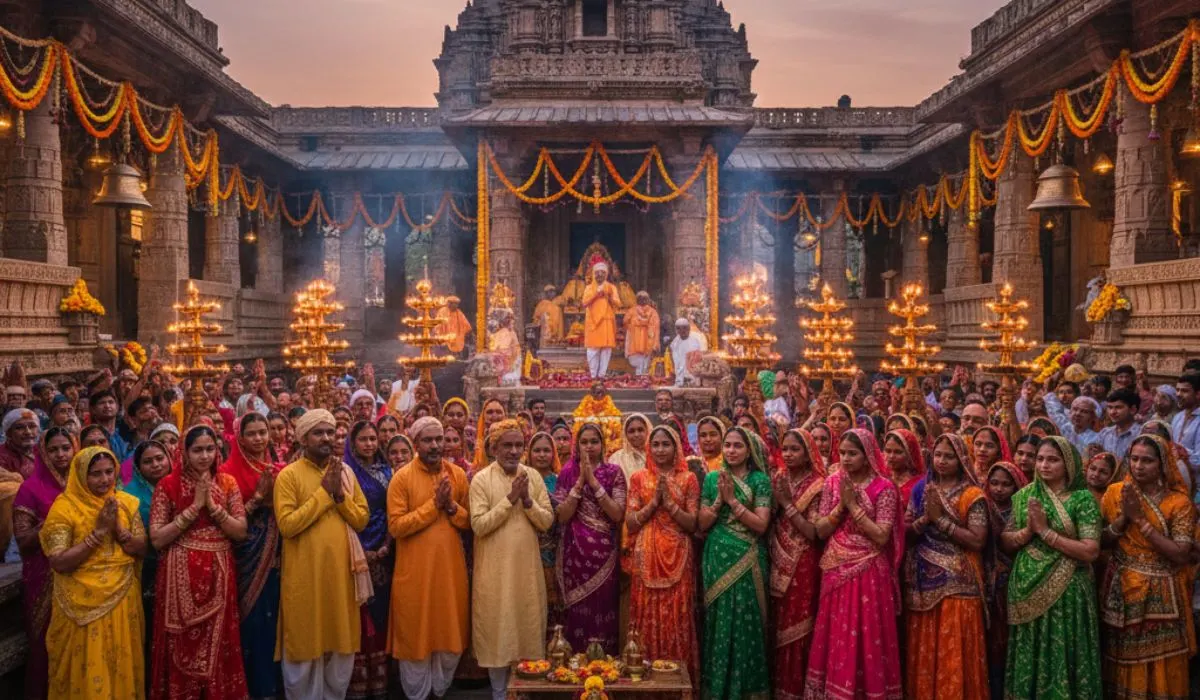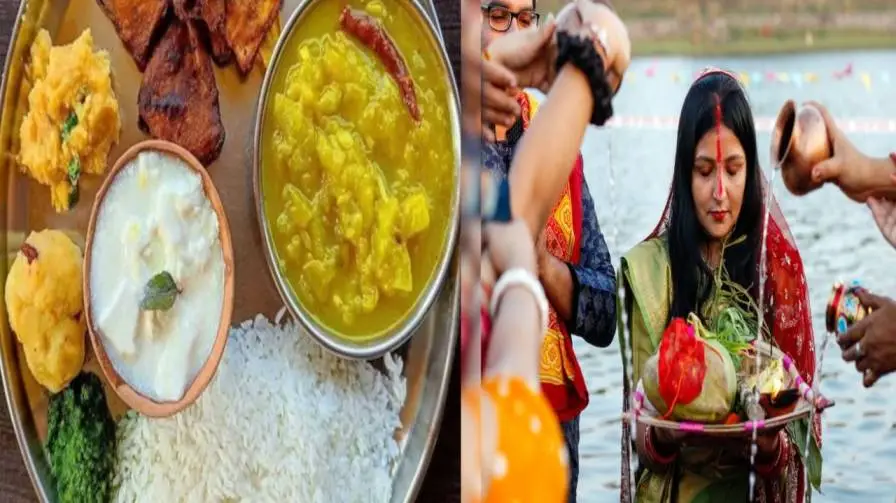Ganesh Chaturthi, also called Ganeshotsav, is a ten-day festival. It starts with placing clay idols of Lord Ganesha in homes and large pandals for community celebrations. On the tenth day, Anant Chaturdashi, the Visarjan ceremony happens. The idol is celebrated with music and the chant Ganpati Bappa Morya Pudhchya varshi lavkarya. This means, come back soon next year. Finally, it is submerged in a nearby water body.
In Maharashtra, particularly Mumbai, Ganesh Chaturthi is energetically anticipated. In the city, various mandals celebrate the festival by installing Master Ganesha symbols. These events happen outside the main ceremonies at the Siddhi Vinayak sanctuary in Prabhadevi. They include daily cultural programs.
Labaugcha Raja in Parel is a beloved icon. People from all over the state come to see the celebrations. These include dances, bhajan singing, and cultural performances. In other areas, pandals show social issues. They are decorated with lively features and aartis.
Beginnings of Ganesh Chaturthi in Gujarat
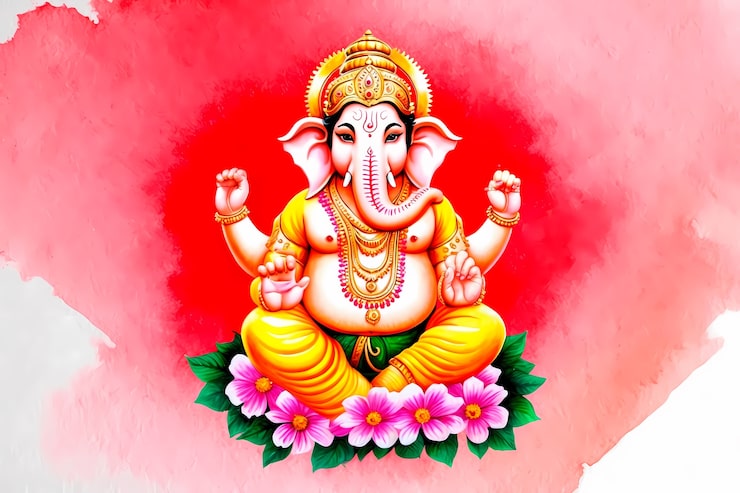
Traditionally, Ganesh Chaturthi was not as broadly celebrated in Gujarat as in Maharashtra. Social exchanges thrived as people traveled between states for work, trade, and education. Maharashtrian families and students started celebrating Ganesh Chaturthi in Ahmedabad, Surat, and Vadodara.
Related Article: Eco-friendly Ganesh Chaturthi: A Green Festival Revolution in Mumbai
Over time, Gujarati families and local mandals began organizing Ganpati celebrations. They combined their traditions and customs in these festivals. Today, you can find pandals in almost every major Gujarati city. They have bright décor, uplifting music, and a joyful vibe that fits Mumbai and Pune.
Spiritual Importance: Past Celebration
At the heart of it all, Ganesh Chaturthi in Gujarat is not about music, dance, and food—it is about confidence. Ruler Ganesha is honored as the remover of obstacles and a source of wisdom. He holds great importance in Gujarati families.
Many businesses and families start new journeys by seeking Ganpati’s blessings. This makes the celebration more meaningful. Chanting “Ganpati Bappa Morya” deeply connects Maharashtrians and Gujaratis. It shows their shared faith, which transcends borders.
How Is Ganesh Chaturthi Celebrated?
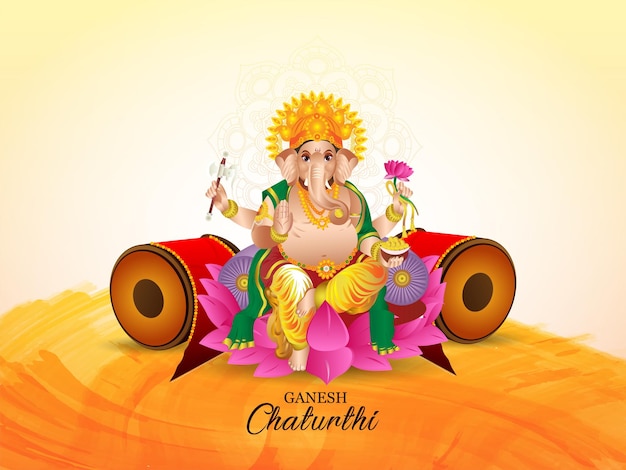
Sweet shops offer an assortment of modaks, Ruler Ganesha’s favorite sweet. As the dhol and tasha drums beat, and chants of “Ganpati Bappa Morya” fill the air, Mumbai buzzes. The ten-day Ganpati celebration ends with the Anant Chaturdashi visarjan parade. It starts at Lalbaug and takes about 22 hours to reach Chowpatty.
In Goa, Ganesh Chaturthi is celebrated with glory. Homes proudly display clay murtis of Ruler Ganesha under a matoli, which is a wooden canopy. This matoli is adorned with flowers, fresh vegetables, and fruits. In Panjim and Quepem, local mandals host Sarvajanik Ganeshotsav.
They set up large symbols in brightly lit pandals. People in regular clothes visit these pandals. They buy lucky draw tickets and join contests for the best-decorated Ganesh, rangoli, and fancy dress. This fun lasts for ten days. Conventional desserts like nevri, ladoos, modaks, and patoleo are disseminated and enjoyed.
Read Also: Ganesh Chaturthi 2025: What’s New in Lalbaugcha Raja This Year?
In 1892, during the Peshwa era in Maharashtra, progressives Shrimant Bhausaheb Rangari and Vishwa Bhasavdekar started the Sarvajanik Ganesh Utsav in Pune.
This convention proceeds with community celebrations held throughout Pune. The biggest Ganpati icon in Tulshibaug, Pune, stands at 15 ft and highlights a distinctive theme each year.
Dagdusheth Ganpati Mandir is a popular place for prayers. It attracts visitors from all over Maharashtra. Tambadi Jogeshwari and Kasba Ganpati Mandir are other prevalent destinations.
The Kasba Ganpati Mandir is the managing god in Pune city, also known as Gramdaivat. The visarjan ceremony in Pune is lively. Women wear nauvari saris, while men and boys don bright red or saffron kurtas.
The highlight is the expound execution (vadan) using five instruments: dhol, tasha, tol, jhanj, and dhvaj. The 131-year-old Shrimant Bhausaheb Rangari Ganpati symbol is made of papier-mâche and sawdust. It sits on a traditional wooden chariot and is pulled by bullocks during the parade. Finally, a smaller version of the idol is immersed.
Karnataka's Ganesh Chaturthi is unique. It precedes the Swarna Gouri Vratam, also called Gouri Habba. This makes it known as the Ganesh Gouri Celebration. The primary road, Car Road, buzzes with fervor, and activities start days in advance.
Why Ganesh Chaturthi Is Celebrated for 10 Days?
Road vendors provide symbols flowers mood enhancers and sugar cane. You can find them near the busy Clock Tower. Music is key to the celebrations. Reverential tunes, called Bhaktigeetas, are sung in various pandals. Melodic beats follow, and people gather for evening festivities.

In Bengaluru, the APS College Grounds in Basavanagudi hosts a popular celebration that spans over five decades. The Bengaluru Ganesha Utsava is a ten-day social event. It features exhibitions by famous performers and is one of India’s biggest gatherings.
Hyderabad is famous for the Khairatabad Ganesh. It's one of the most popular Ganesh pandals. It highlights a towering 50-ft Ganesh symbol that attracts people from across the city.
The lanes of Vijayawada buzz with life during Ganesh Utsav. Shoppers fill the stalls in the Kaleswara Rao and Nunna Mango markets. They browse flowers, decorations, idols, and sweets. More than 3,000 pandals across the city joyfully celebrate Ganesh Chaturthi.
Surat prepares for Ganesh Chaturthi each year. This tradition started in 1942. A Ganesh symbol was placed in the Hindu Milan sanctuary in Gopipura. The Surat Ganesh Utsav Samiti hosts a Ganesh entry Yatra. Around 50,000 icons are presented in various styles across Surat. Mud icons, around 9 ft tall, are commonly seen in most mandals.
The Vidarbha Mathadi Kamgaar Ganesh Utsav features a 31 ft tall symbol. It attracts many people from Nagpur. Social activities happen each evening. On Visarjan day, the Futala Lake area buzzes with activity. Thousands gather to say goodbye to Lord Ganesha. The Shri Ganesh Mandir Tekdi, Nagpur, is another popular place for the morning aarti.
Conclusion
Ganesh Chaturthi in Gujarat shows how Indian culture grows by embracing diversity. What started as a Maharashtrian tradition now has a lively home in Gujarat. It’s filled with garba music, Gujarati sweets, and a strong sense of community.
The celebration is now shared across many regions. It represents commitment, joy, and social connection. As the chants of “Ganpati Bappa Morya” fill Gujarat, they bring more than prayers. They promise unity, creativity, and celebrations that never end.



